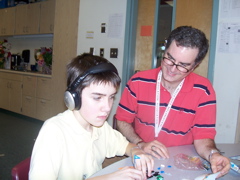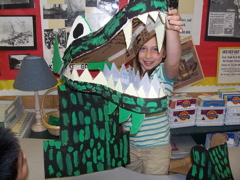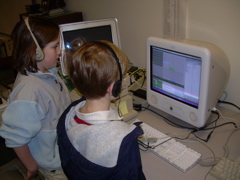The following are innovating simulations and video games that I believe could have impact on the learning success in a K-12 school environment.
Scratch: a multimedia programming environment for students of all ages. One of the students I work with in Tech Club created his own project, a digital drum set, that you can play with on the site. In installed this software on the library computers at the school where I work.
Cocoa, Internet Programming for Kids: a project started by Apple Computer and spun off into Stagecast, another multimedia programming enviroment. As you will see from the Cocoa link, at one point I was fairly obsessed with this program and used it extensively in a middle school Multimedia Club while developing much documentation and training material for the software.
The Restaurant Game: "The first collaboratively authored computer game." Though I have yet to find the time to play this game, I find the idea brilliant. The designer will comb through the gameplay of the participants to create a unique new videogame experience. Play the role of a dinner or a waiter! Extra-meta!
Wario Land II: One of my favorite video games ever, this one is for the Game Boy Color. You play Wario, kind of a greedy Mario character. You have to navigate through 12 "chapters" that are comprised of 52 "worlds." The narrative is completely non-linear. There are more than one way to get through the game. Although your character can be squashed, set afire, and stung, you never die, and the "hinderances" can actually be beneficial. For example, squashed flat, Wario is able to get through small spaces. Brilliantly fun gameplay with ridiculous graphics and sound effects. The puzzles and different ways of considering a problem make games like this appropriate in an educational context, taken in moderation.
Chipwits: This was my all time favorite game on my original Macintosh. My friend and I would spend hours creating "programs" for our robots to navigate complex mazes. One programmed using a graphic programming language. Years later, Doug Sharp has resurrected his code and released a new version of this classic!



